We got lots of questions about the “miracle” cloning paste we showed on Instagram recently. What is it? What does it do? And why the heck is it called “keiki“? Short answer: keiki paste is an easy-to-apply growth hormone for your houseplants that can help fill out bare spots on pothos, orchids, and more. It’s a smart solution for any plant parent, but we’ll tell you what it can and can’t do, so your expectations match the result that you’re likely to get. This is not a sponsored post, by the way.
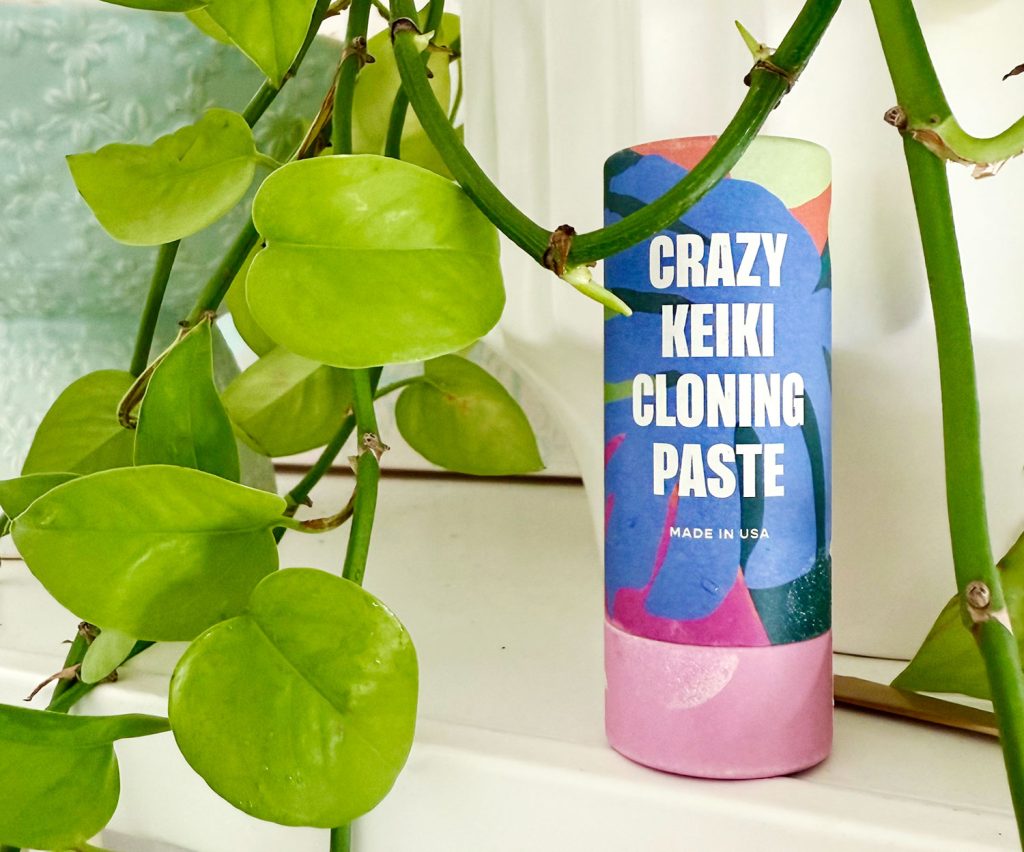
We first learned of keiki paste from a plant-obsessed neighbor a few months ago. We were skeptical at first – can it really “wake up” a dormant node on our plants? – but now we’re quick to sing its praises. Here’s why…
What Does Keiki Paste Do?
Keiki Cloning Paste is a plant growth hormone that can stimulate new leaf growth on your houseplants. It’s great for filling bare areas on plants like pothos, orhcids, and even fiddle leaf figs. For example, we used it to help regrow parts of this leafless vine on our bathroom plant shelf.
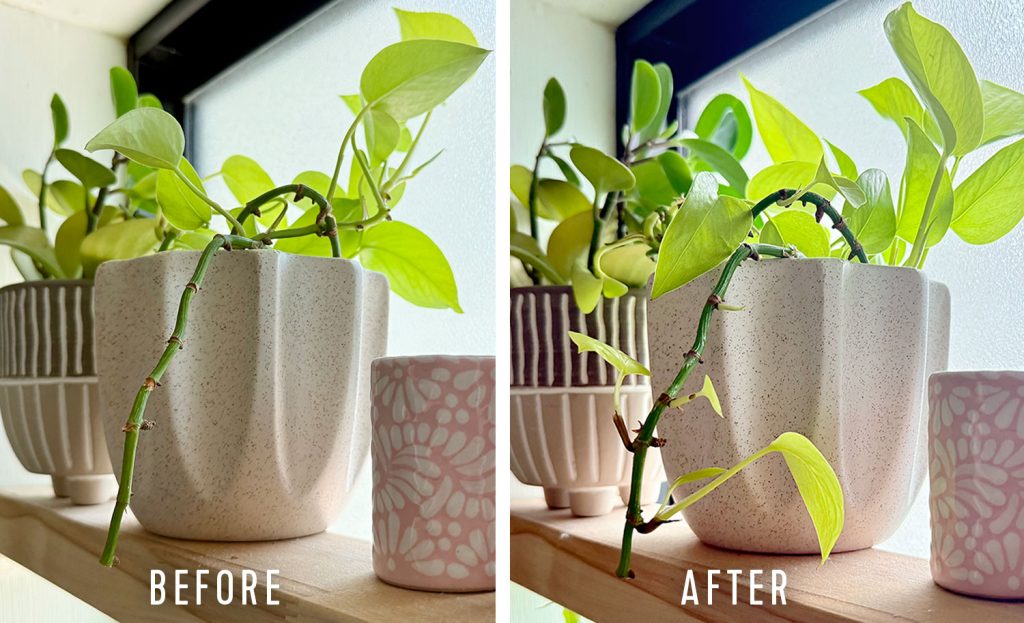
Keiki paste is different than rooting hormone, which is used to prompt root growth on plant cuttings during propagation. Instead, keiki paste is applied to above-ground nodes to help produce new leaves or branches.
What’s In Keiki Paste?
Keiki pastes typically consist of a sticky medium (like lanolin) that contains plant nutrients & hormones. The exact hormone formula for each paste is proprietary, but most include a synthetic cytokinin called 6-benzylaminopurine, or 6-BAP. Cytokinins promote cell division in plants, and 6-BAP is one of the most widely used synthetic versions. Again, this is distinct from rooting hormones that used auxins, not cytokinins.
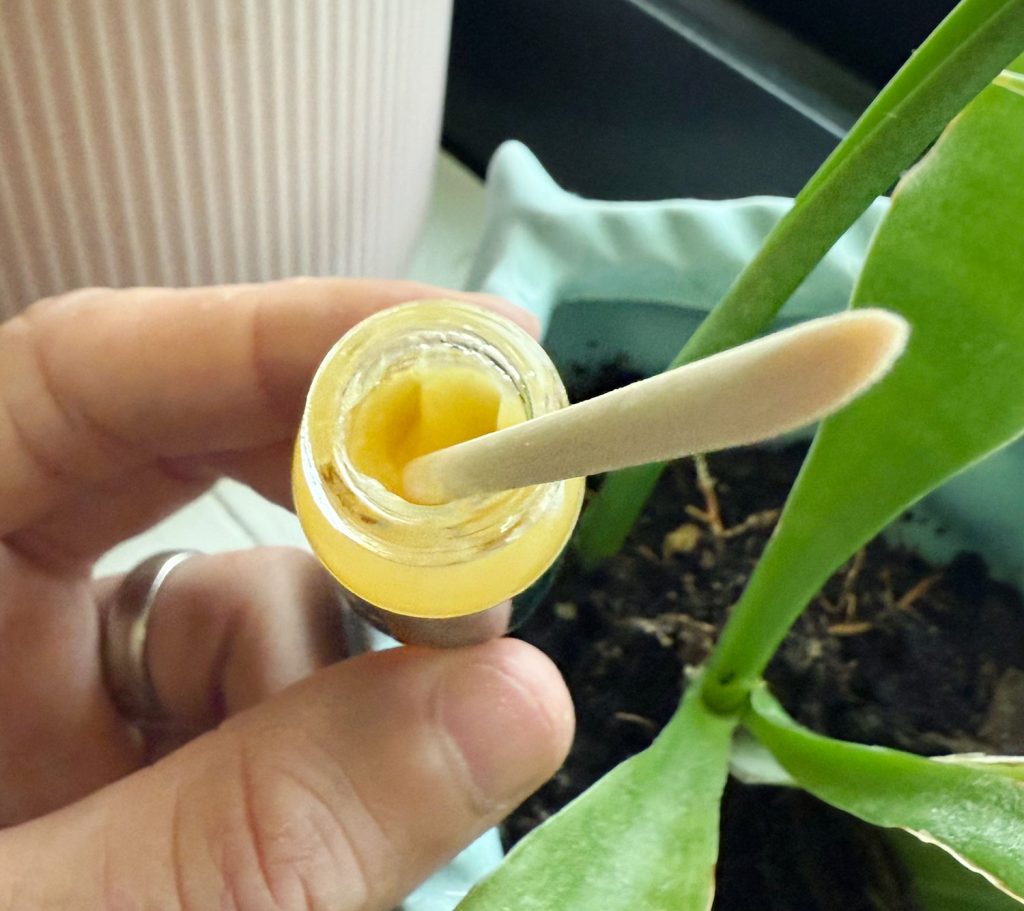
Lanolin is a natural substance that comes from sheep’s wool. You may know it as a Vaseline-like substance used as a moisturizer for your skin. In keiki paste, it serves as a waterproof “glue” that keeps the hormones in place against the plant node. It’s quite sticky, so be sure to clean it off if you come in skin contact with it. You don’t want the hormone getting in your eyes, mouth, or sitting on your skin.
How To Apply Keiki Paste?
Two things we love most about keiki cloning pastes is that (1) they are easy to use and (2) a little goes a long way. You can apply it following 3 simple steps:
- Score The Node
- Apply The Paste
- Water & Wait
Video Tutorial
Here is a brief video (60 seconds!) that shows how we applied keiki paste to another pothos plant in our house. There is also a written tutorial with photos below if you prefer.
NOTE: You can also watch this video on YouTube.
Step 1: Score The Node
First, make a small cut at the node where you want to grow a new leaf. Nodes are the bumps along your vine or stem where a leaf or branch used to be. The cut doesn’t need to be deep, so a toothpick or table knife should do the trick.
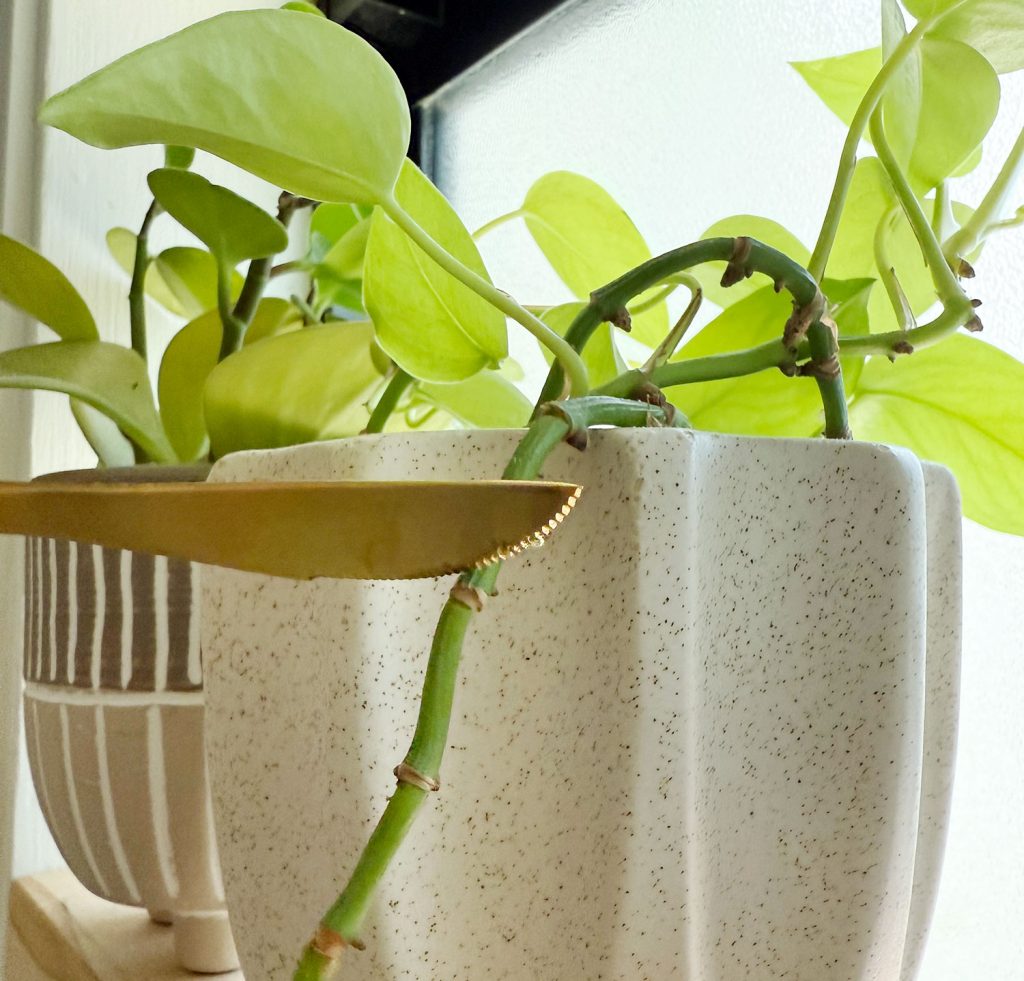
If your node is covered by a thin shealth (called a bract) you may need to peel this off first. This won’t hurt the plant. You’re just trying to help the hormone penetrate into the node more easily.
Step 2: Apply the Paste
Use a toothpick or cotton swab to dab a small dot of keiki paste onto the node. A little bit goes a long way – think half of the size of a pea. Too much keiki paste can stress the plant.
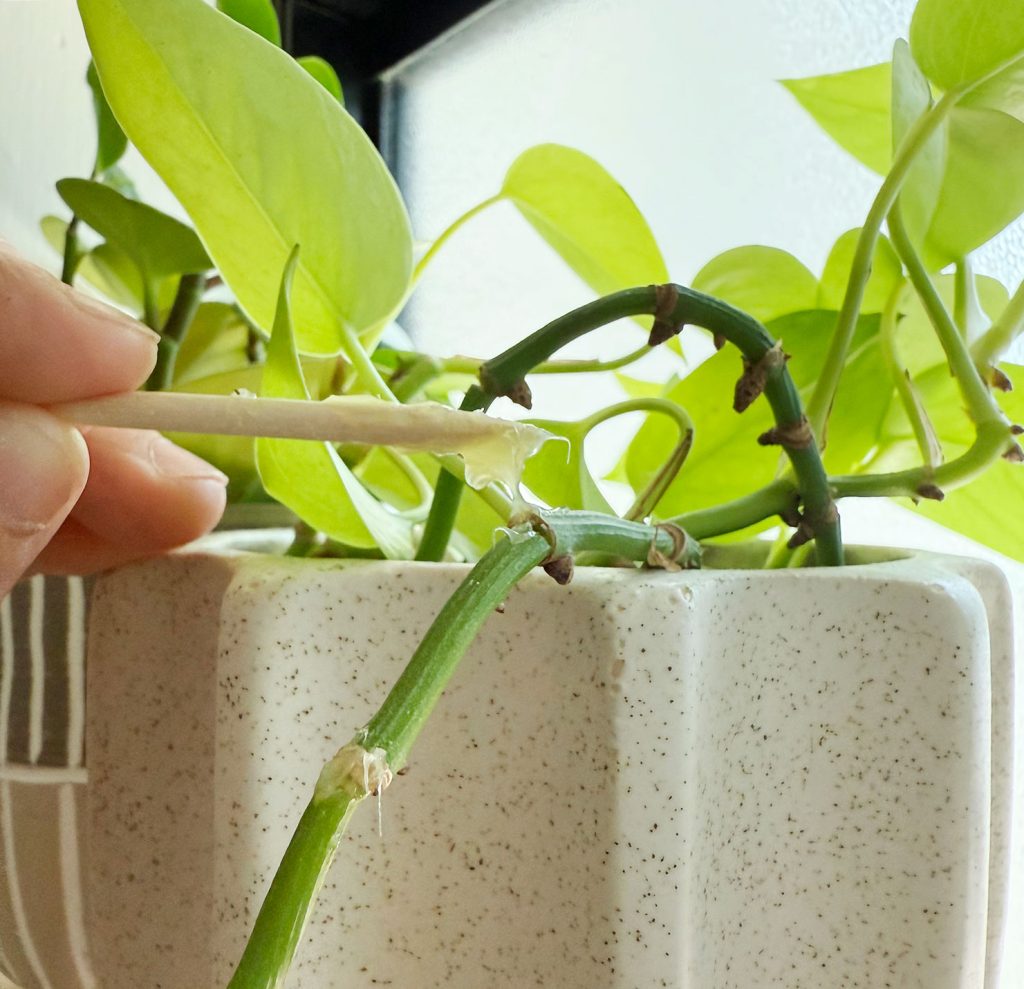
Step 3: Water & Wait
That’s it! Now your job is just to be patient and care for your plant as usual. This means making sure it is receiving enough water and light to support growth. Results may begin showing in 1-3 weeks, but can take longer depending on growing conditions and health of the plant.
What Does “Keiki” Mean?
Keiki is pronounced “KAY-kee” (kinda like reiki, if you’re familiar) and is the Hawaiian word for “child” or “little one.” In the plant world, keiki refers to new sprouts on an orchid plant, specfically those produced asexually (aka, not from a seed). Since these types of pastes were originally developed for orchids, they earned the name keiki paste – even though they can be used on many other plant varities.
What Plants Can I Use It On?
Keiki paste was created for orchids, but it can be used on just about any plant with above-ground nodes. So far we have tried it on many of our pothos plants, but you can use it on a wide range of other plants such as:
- Vining plants like philodendrons & hoyas
- Flowering plants like orchids & begonias
- Succulents like donkey tails & string of pearls
- Small trees like fiddle leaf figs & rubber trees
Look for plants with nodes where leaves, branches, or aerial roots grow (not zz plants or snake plants). It won’t hurt to experiment with different plants, as long as you don’t apply it to too many nodes at once and don’t over-apply the paste.
Why Isn’t My Keiki Paste Working?
We’ve been wowed by keiki paste again & again, but results are NOT guaranteed. So what gives? Here are some tips to keep in mind:
- Keiki paste works best on healthy plants. It won’t solve underlying health issues like insufficient light, lacking nutriets, or over/underwatering. So if your plant is struggling, make sure you address those before turning to keiki paste.
- Only treat a few nodes at a time. We’ve gotten the best results applying keiki paste to just 1 or 2 nodes at a time. On occasion we’ve gotten overzealous (like when taking pictures for this post!) and simultaneously treated 6 or 7 nodes on the same vine. This likely overstressed the plant and compromised our results. We only saw growth on 2 or 3 nodes anyway, so be patient and don’t overdo it.
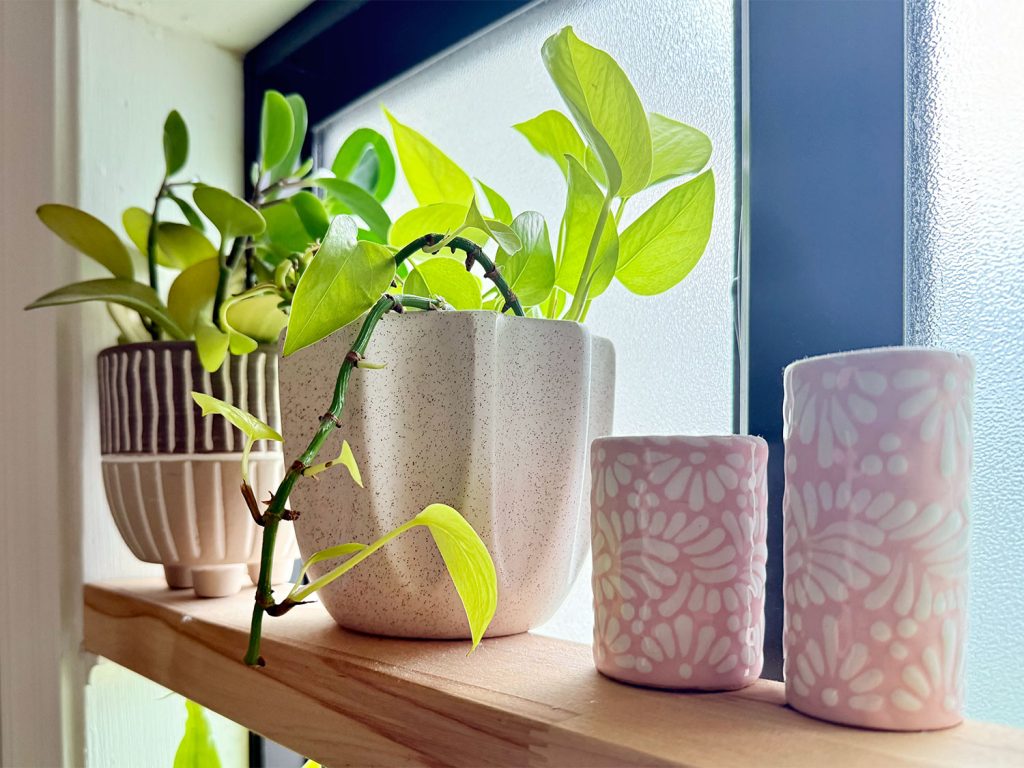
- Consider other fixes too. If you’re unhappy with a bare spot or leggy vine, it may be better to prune it than try to rescue it. Remember, most cuttings can be propagated and replanted in the same pot to help give it a full look. With vining plants like pothos, you can also coil the vine into your pot, pin the nodes right below the soil (bobby pins work great for that), and it should root over time.
These caveats aren’t meant to dissuede you from trying keiki paste. It’s just good to know its limits and the conditions you’ll need to get the best results.
Where to Purchase Keiki Paste
We got our Crazy Keiki Cloning Paste online from Southside Plants (a very cute sister-owned company), but several brands and website sell their own versions. It may feel shocking to pay upwards of $20 to $25 for such a small jar, but keep in mind that a little goes A LONG WAY. Remember, you’re only putting half of a pea sized dab on each node. So this should last us a long time!
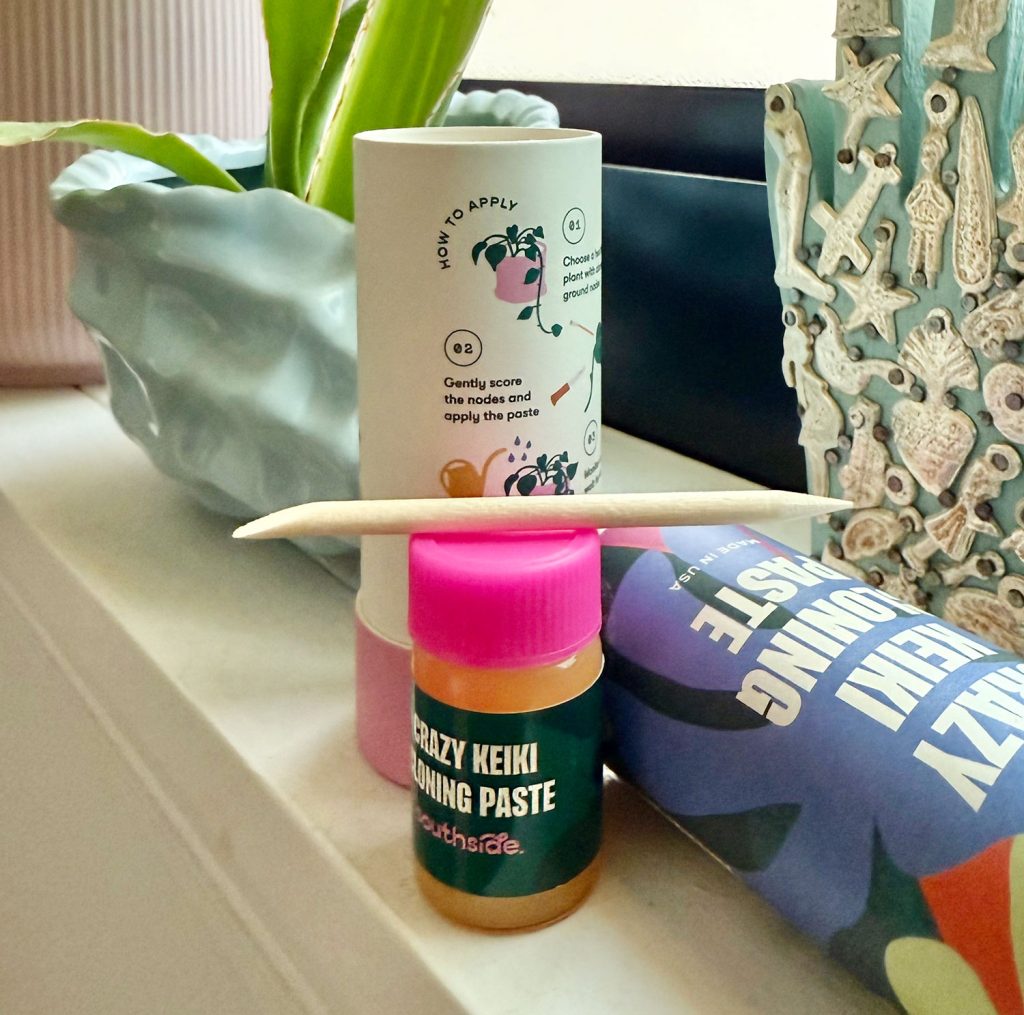
Keiki paste should be stored in a cool, dark place away from sunlight – which is one reason we like that Southside’s version comes in an opaque storage tube, complete with application sticks.
More Plant Guides
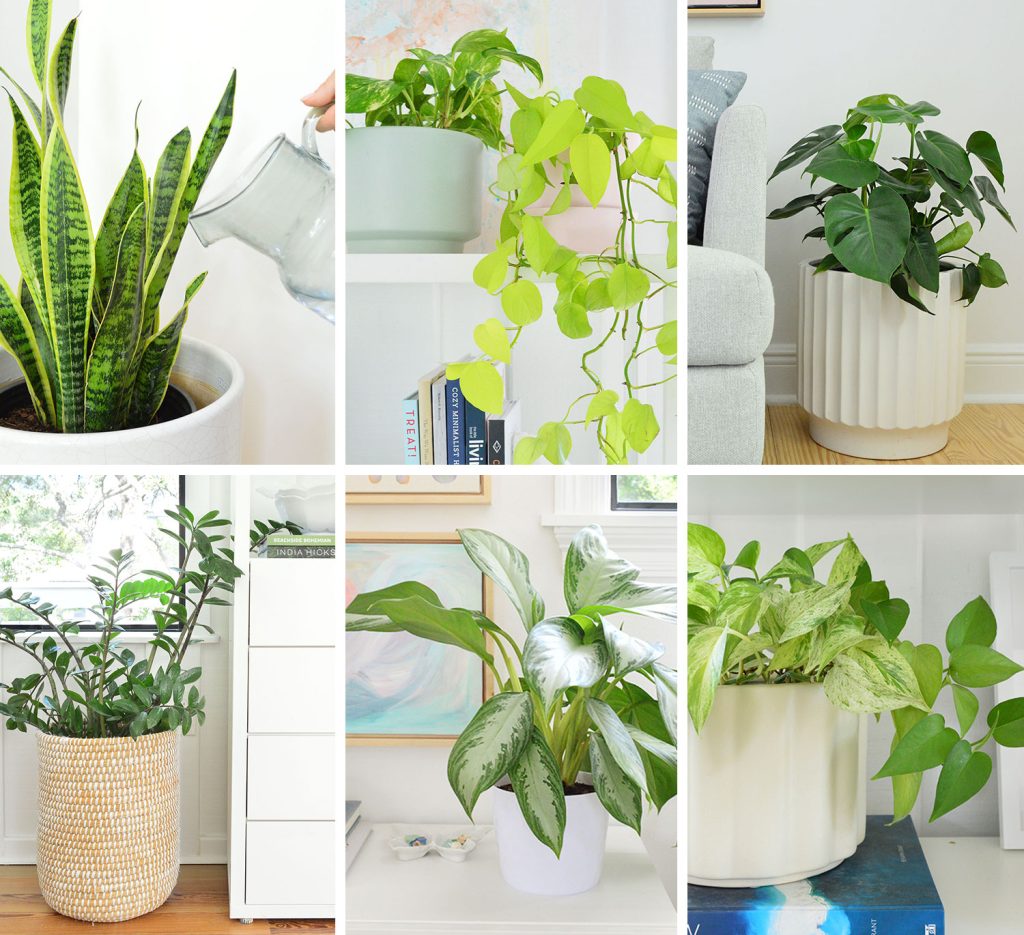
If you’re looking for more information on some of our favorite plants, check out some of these posts below:
- Best Low-Light Indoor Plants
- Best Air-Purifying Plants
- Marble Queen Pothos Care Guide
- Neon Pothos Care Guide
- Golden Pothos Care Guide
- Aglaonema Care Guide
- Snake Plant Care Guide
- Fiddle Leaf Fig Care Guide
- Tree Philodendron Care Guide
- How to Build An Easy Plant Shelf
- How to Propagate Succulents
*This post contains affiliate links, so we may earn a small commission when you make a purchase through links on our site at no additional cost to you.
